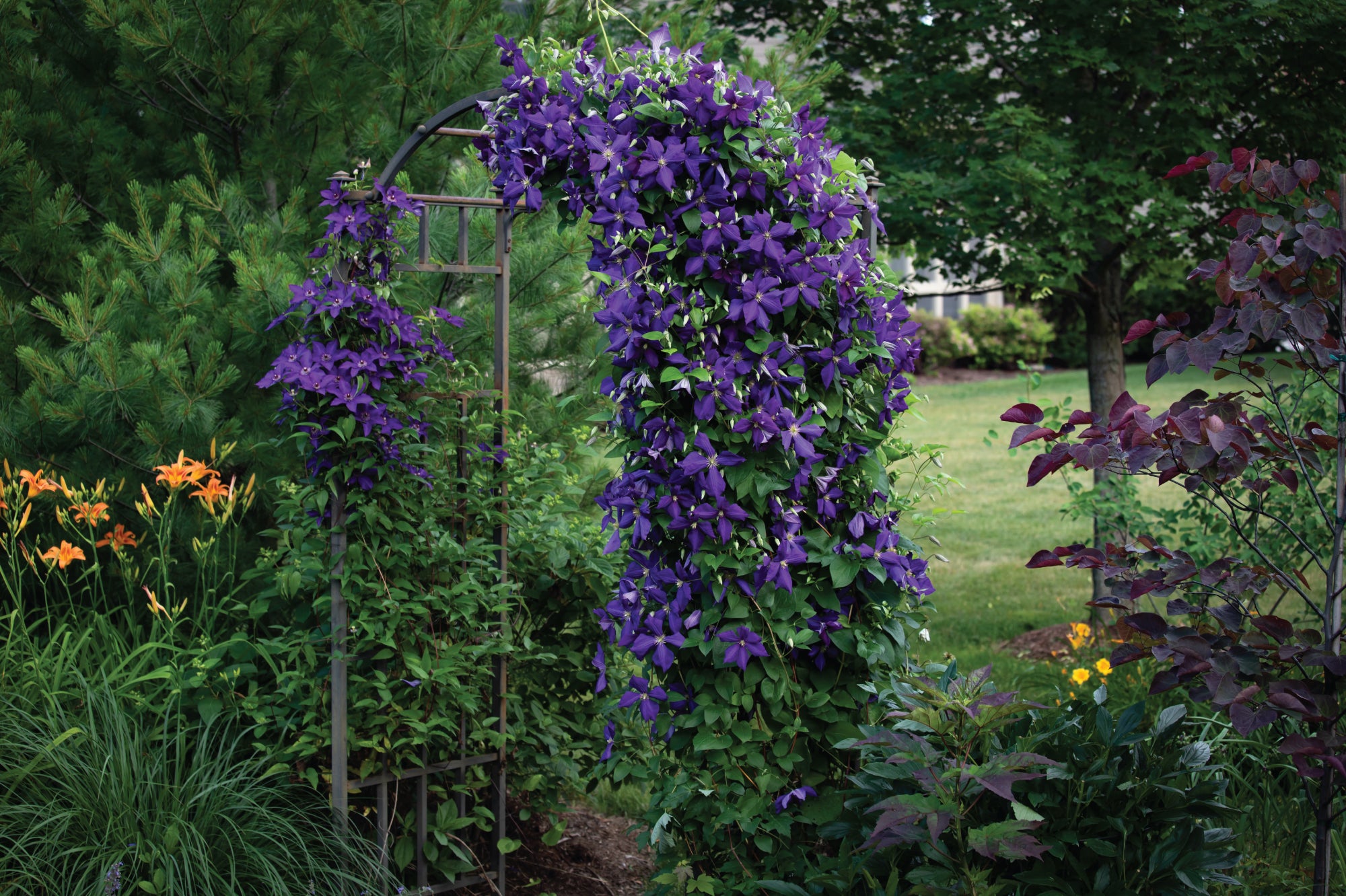
Clematis
The genus Clematis includes over 300 species spanning every continent except Antartica. Without a doubt there is a clematis that will fit perfectly in your garden!
More than 400 varieties are in cultivation. Clematis are grown for their abundant flowers, often followed by decorative, filamentous, silvery-gray seed heads. They are valued for their long flowering period, and for the variety of shape and color of their flowers.
While most clematis are known for their twining leaves and semi-woody stems, they are extremely diverse in habit, size, and growth requirements. There are evergreen and deciduous varieties. Some cultivars are compact and perfect for containers and some are sprawling giants that can hide an entire fence line or shed!
The Basics
Where to Plant
The majority of clematis benefit from ‘hot tops and cool bottoms.' This means the top of the plant with all the foliage should receive full sun to partial shade and the base of the plant with the roots should be shaded. It is essential for the roots to remain cool and moist even during the heat of summer. This can be accomplished with a heavy mulch, the shade of low growing plants, or even a large rock.
There are some varieties that prefer partial to full shade so it important to check the plant tag when buying a new clematis.
Plant your clematis next to a plant or structure that it can grow up.
How to Plant
Clematis like fertile, humus-rich, well-drained soil.
When planting, place the root ball about 3 inches below the soil surface to reduce the risk of clematis wilt and to encourage production of strong shoots from below the soil level. Remember that most clematis need staking, so add one now if required.
Provide the plant with a ground cover plant or a mulch such as shredded leaves, pine needles, straw, bark, or even stones to help conserve moisture and to keep the roots cool.
Clematis resent root disturbance, so extreme care must be exercised when working around the plant to prevent any root damage. Water well, keeping the soil always moist during the first year after planting. Fertilizer should be applied twice during the growing season.
Clematis Wilt
Clematis wilt is caused by soil splashing onto the stem, and is easily prevented with a mulch of bark, gravel, or anything that prevents soil splashing around the stems.
Deep planting allows susceptible plants to develop a crown of growth buds below ground level, and since the wilt disease affects the stem at ground level or just above, healthy new shoots from below ground can restore the plant very quickly if attacked by the wilt disease.
When watering in summer it is best not to wet the foliage, but trickle the water around the base of the plant and give a good deep soak twice a week.
Pruning
One of the most important aspects of clematis culture is the pruning method. Since modern garden hybrids and selections in cultivation come from a range of different species, their growth and flowering habits must be considered at pruning time.
Before pruning give a good feed of compost and bone meal. You may also need to add fresh mulch to prevent soil splash.
There are three types of pruning:
Type I: Blooms on previous year’s growth in the spring. Remove dead wood and lightly prune to shape after flowering. This covers all C. montana, C. alpina, and C. macropetala.
Type II. Bears flowers on old wood in the spring and on new wood in the summer. Moderate pruning after spring bloom as needed. Light pruning after summer/fall bloom.
Type III. Bears flowers on new growth each year. These are summer blooming varieties. Prune these forms hard in winter to encourage new growth for better flowering next season.
2024 Clematis
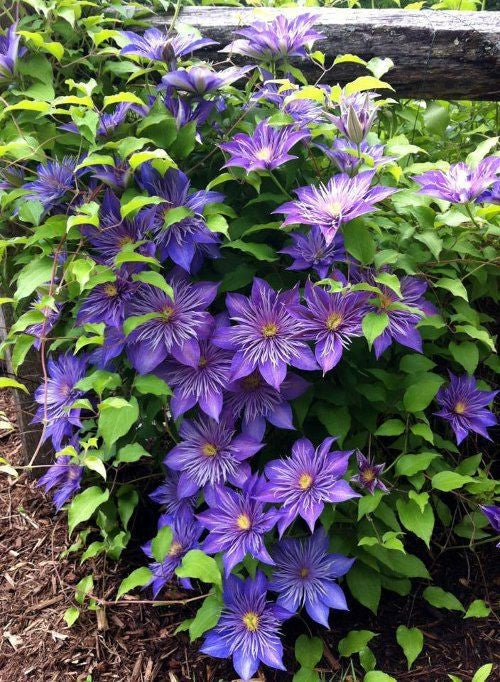
Clematis 'Crystal Fountain'
Bloom Time: Early Summer to Early Fall
Pruning: Type II
This clematis features fountain-like centers on huge 4-5" semi-double lilac blue flowers. Blooms June through September.
Modest in height, this is a perfect choice for a garden with limited space. It is even compact enough for containers. Crystal Fountain can sprawl along the ground or gracefully meander over fences, trellises, and through shrubbery.
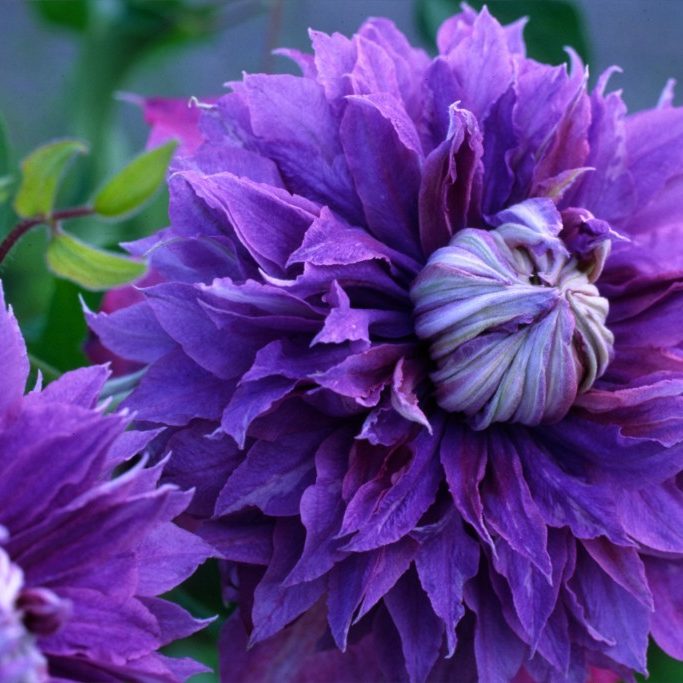
Clematis 'Diamantina'
Bloom Time: Mid-Summer to Fall
Pruning: Type II
This incredibly glamorous clematis produces a profusion of stunning purple-blue, double flowers adorned with rose-pink highlights and span up to six inches in width.
The blooms gracefully unfurl from a tight central ball to create an elegant, multi-layered pom-pom. The flowers last for up to four weeks each.
There are two waves of blooms with the first in late spring to mid-summer and the second flush appearing from late summer to early fall.
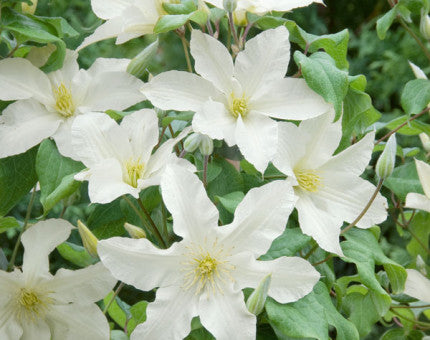
Clematis 'John Huxtable'
Bloom Time: Early Summer to Early Fall
Pruning: Type III
Creamy white flowers are up to four inches in diameter. John Huxtable will bloom from June through August and grow to a height of nine feet.
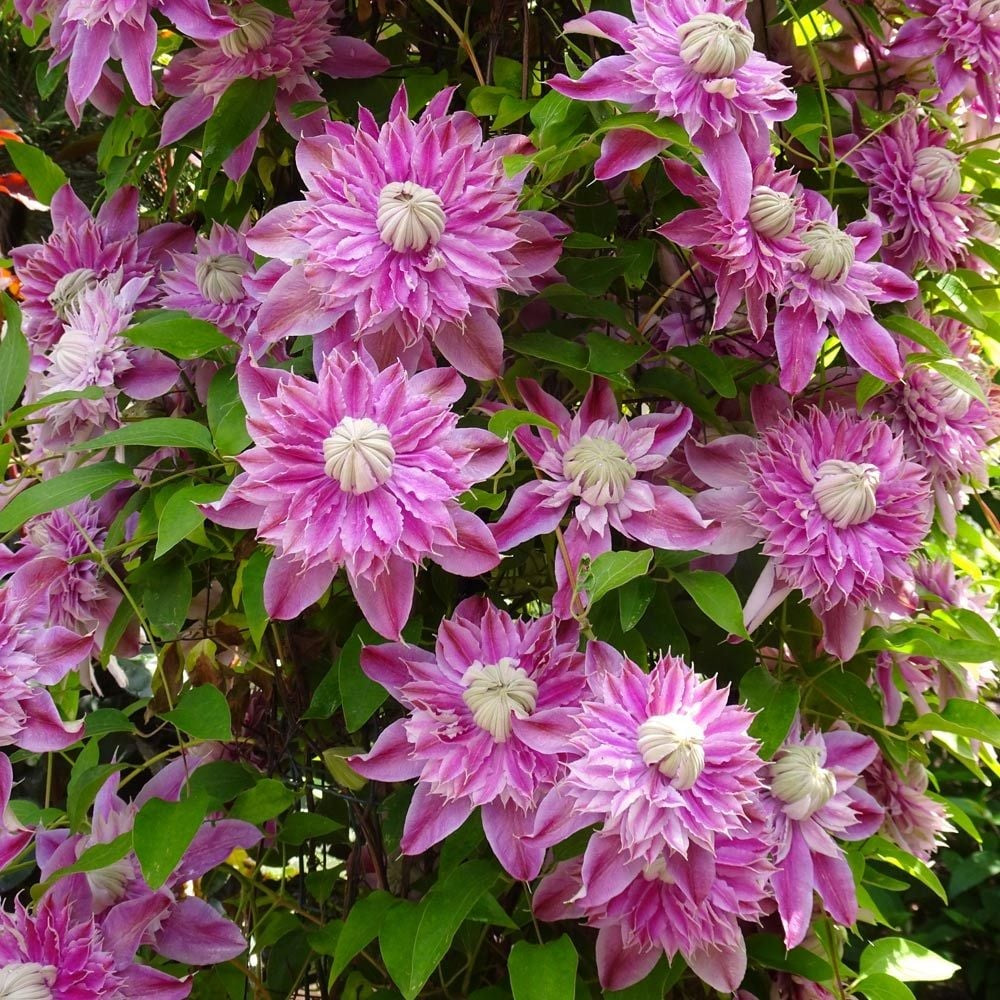
Clematis 'Josephine'
Bloom Time: Early to Late Summer
Pruning: Type II
Large lilac petal surround pom-pom centers of pink-lilac. The base petals will fall away leaving fluffy centers. Each flower can last up to 4 weeks. This variety is ideal for growing in a container or on a trellis or fence.
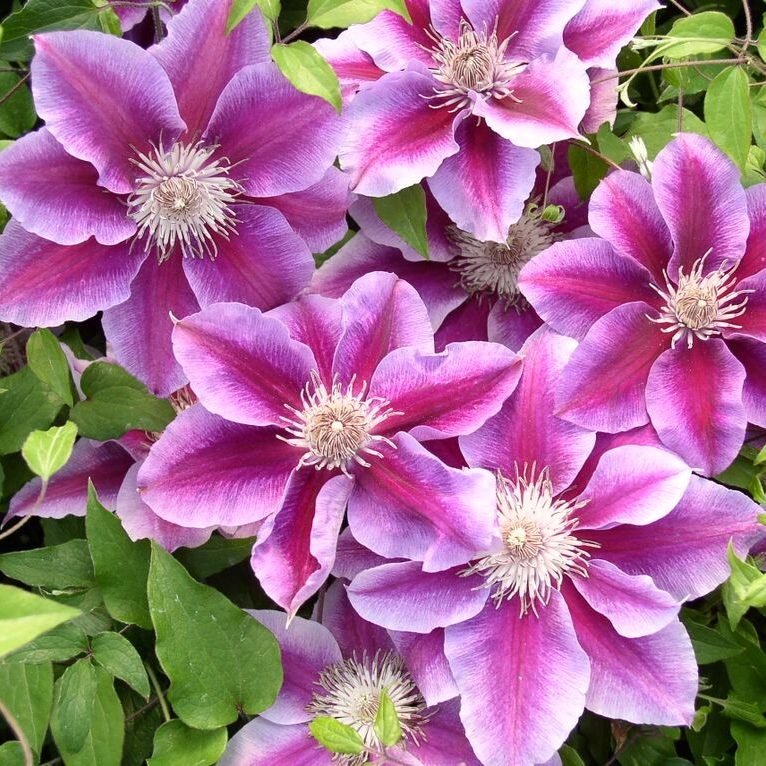
Clematis 'Kilian Donahue'
Bloom Time: Early to Late Summer
Pruning: Type II
This clematis is a deciduous climber with large two-tone pink flowers up to 5 inches across. Through the life of the bloom, the color will shift from fuchsia to lavender with a pink center on each petal. This variety is compact and easy to grow, making it perfect for any spot in your garden.
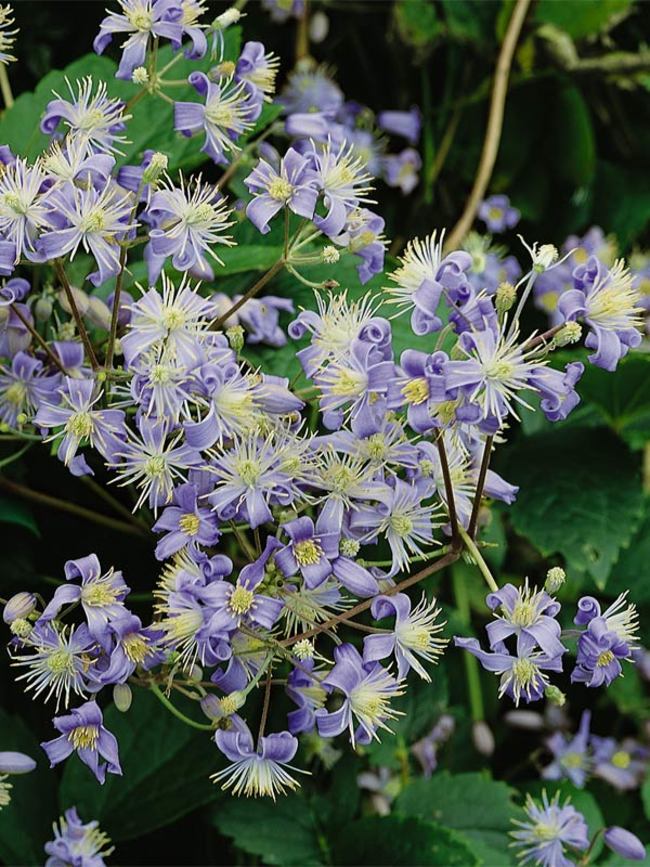
Clematis 'Mrs. Robert Brydon'
Bloom Time: Mid-Summer to Early Fall
Pruning: Type III
This clematis is shrubby and non-vining. It has masses of fragrant lavender flowers whose petals curl away from the center to reveal its prominent stamens. This variety is vigorous and likes to spread out making a wonderful ground cover.
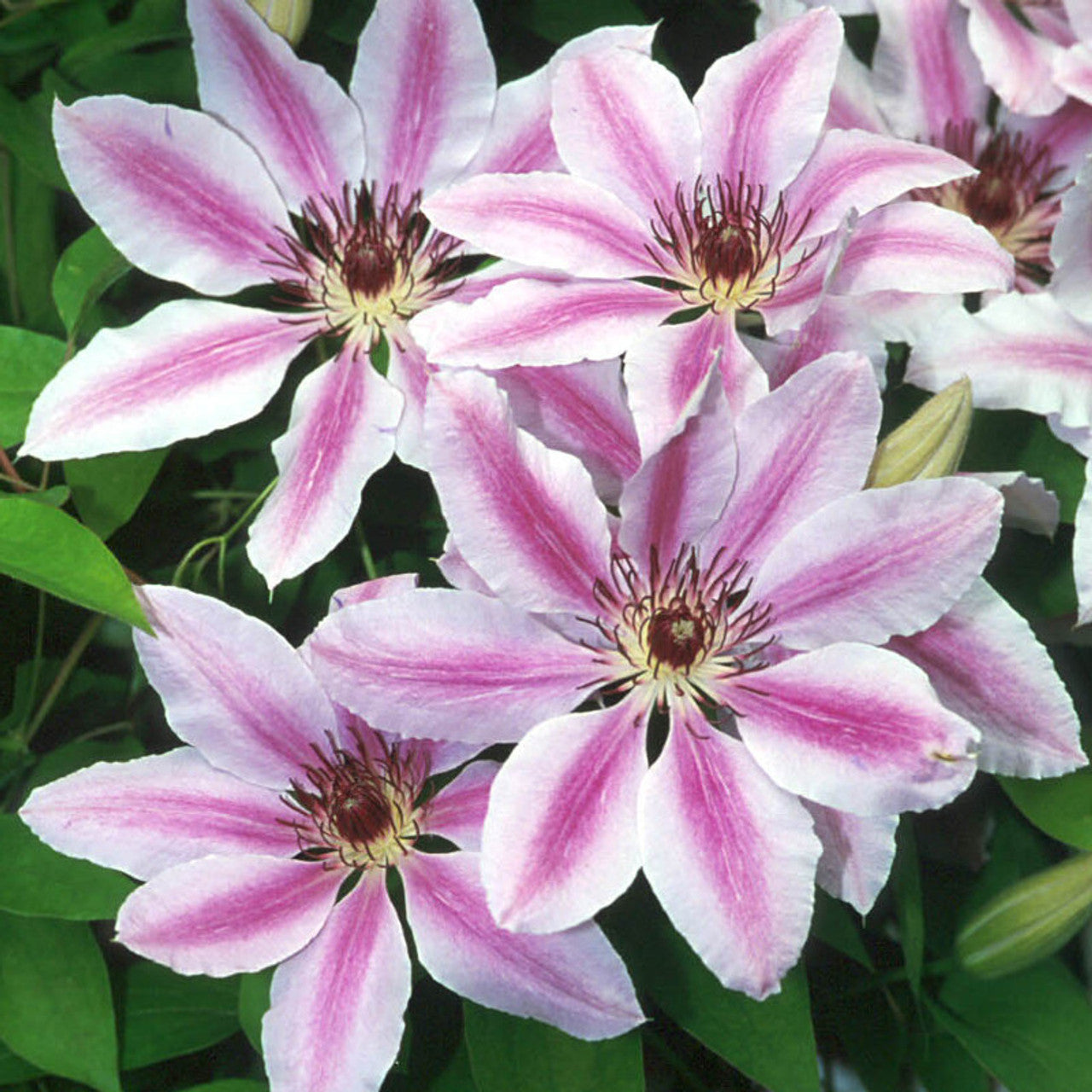
Clematis 'Nelly Moser'
Bloom Time: Late Spring to Early Summer and Late Summer to Early Fall
Pruning: Type II
This clematis is one of the most popular varieties and with good reason. It’s a deciduous vine that has attractive pink star-shaped flowers that are impressively large, up to 8 inches across. This variety is dependable and easy to grow, making it a favorite among gardeners.
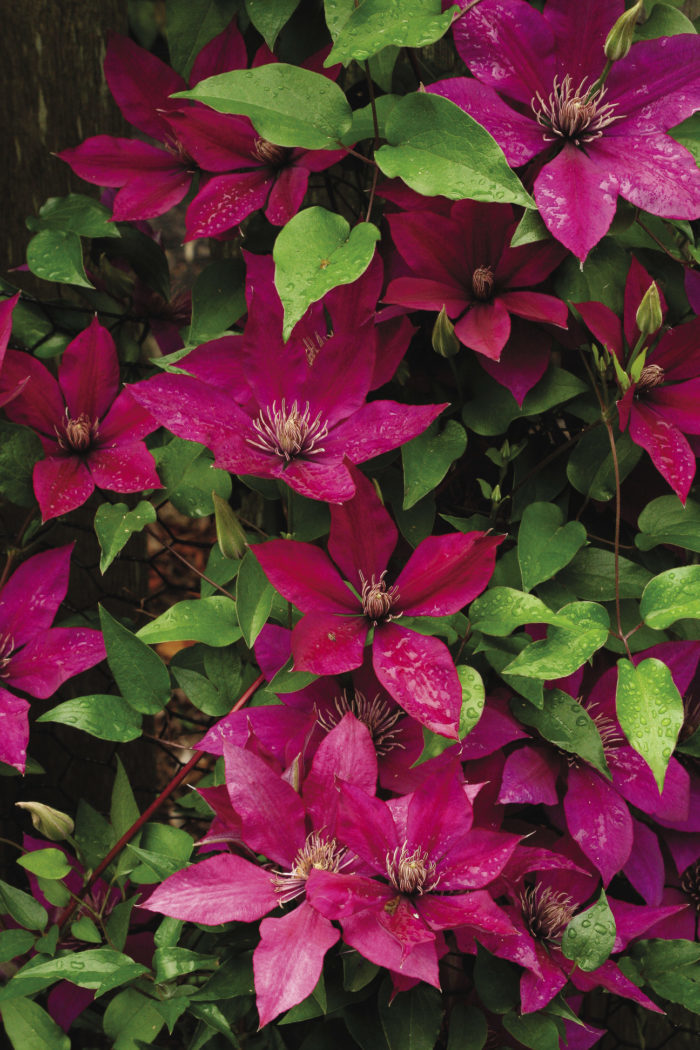
Clematis 'Picardy'
Bloom Time: Mid-Summer to Early Fall
Pruning: Type III
Free flowering, Picardy clematis is a compact, large-flowered clematis with attractive, magenta star-shaped flowers. This floriferous clematis is an excellent choice for patio containers and looks outstanding when grown in a hanging basket. It is perfect for small spaces.
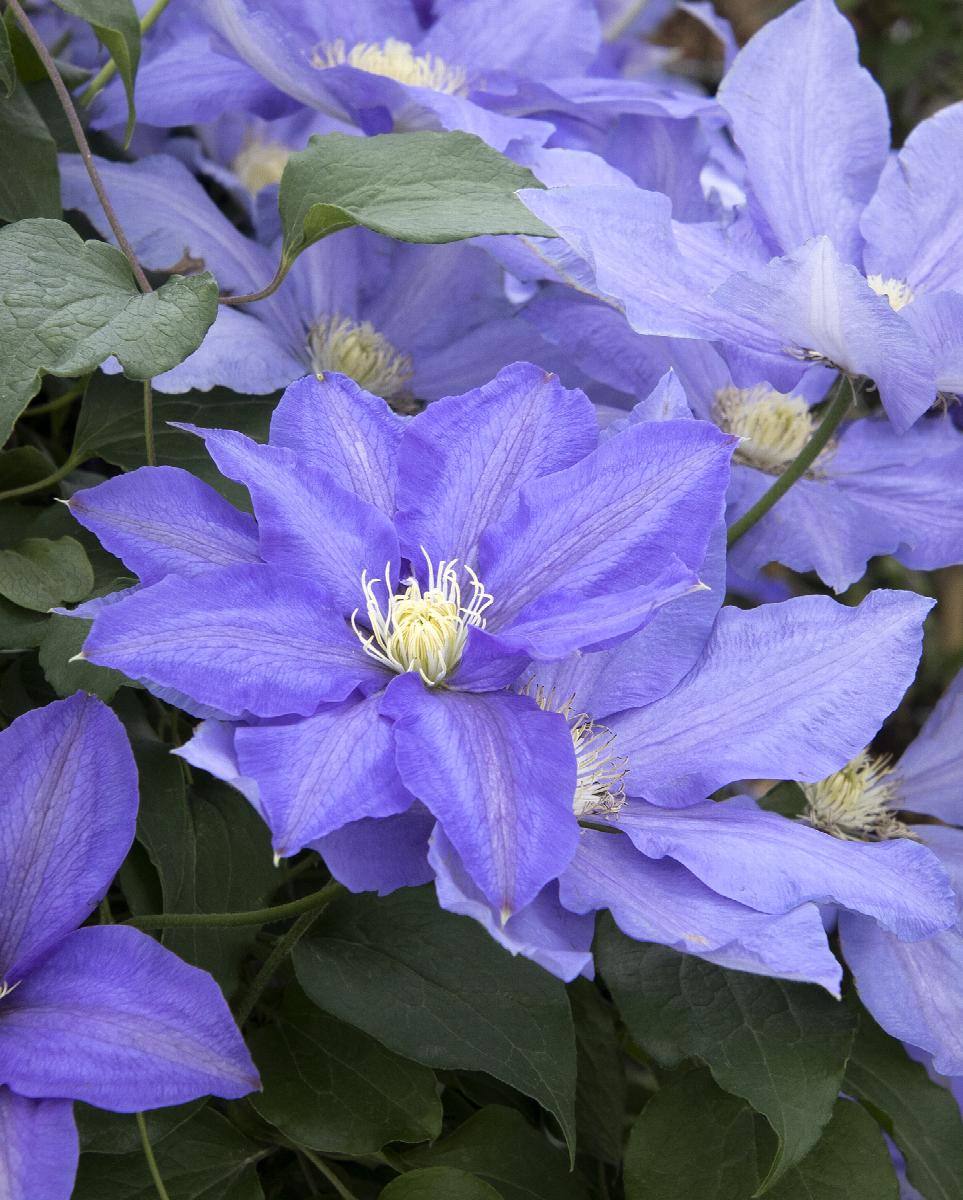
Clematis 'H. F. Young'
Bloom Time: Early Summer
Pruning: Type II
This impressive deciduous variety blooms with plenty of huge, soft blue to lavender flowers that grow up to 6 to 9 inches wide!
Train this clematis on an arbor, fence, or trellis, or allow to climb through shrubbery. It will create an excellent vertical effect in smaller spaces and containers.
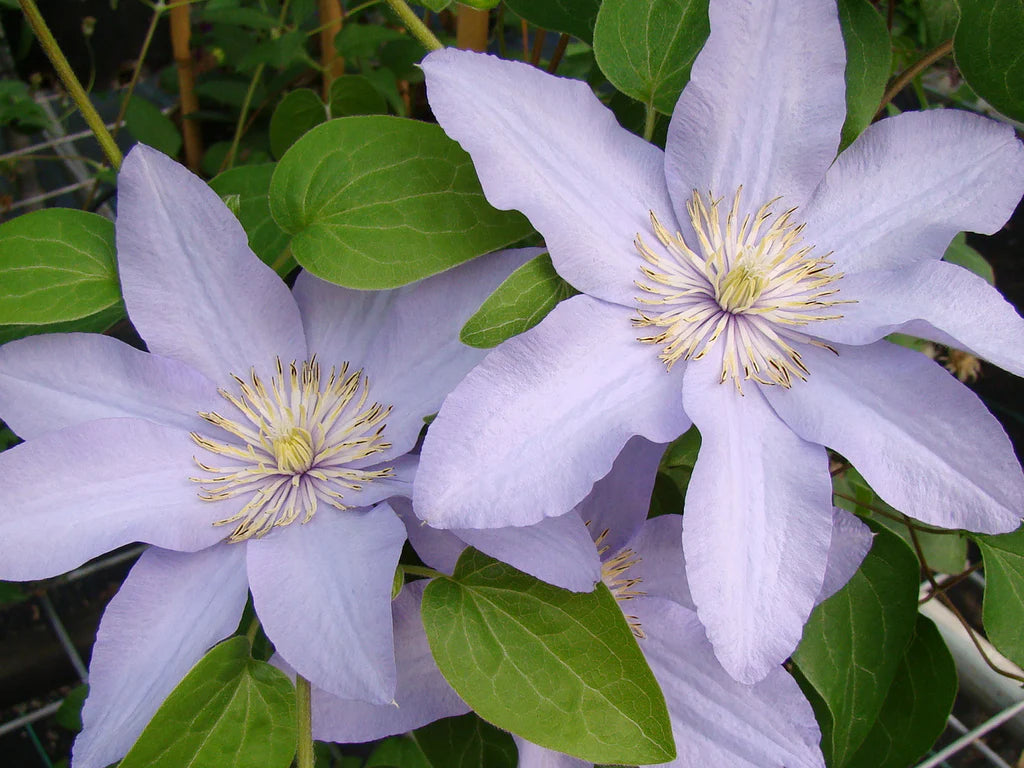
Clematis 'Silver Moon'
Bloom Time: Early to Late Summer
Pruning: Type II
This clematis is a vigorous bloomer with large silvery-lilac flowers, up to 7 inches across. It doesn’t mind the shade, making it a great option to brighten up the darker areas in your garden. This variety is a great choice for growing on trellises and arbors.
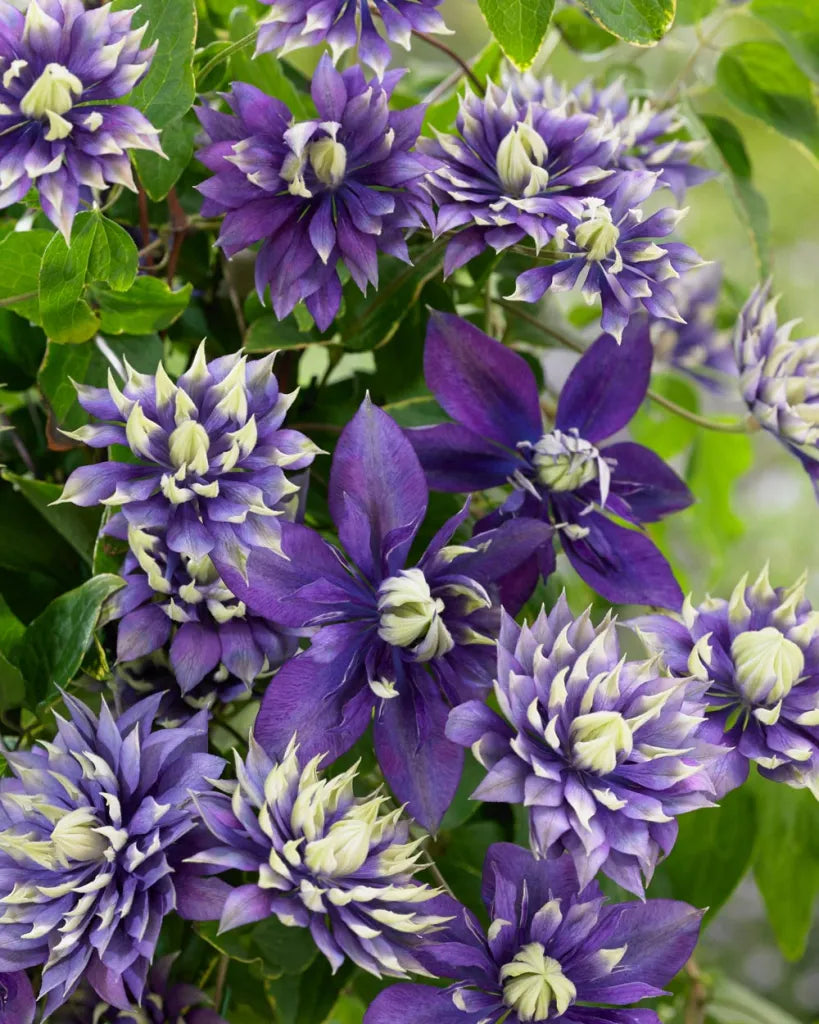
Clematis 'Taiga'
Bloom Time: Summer
Pruning: Type III
This clematis has unique, showy full double blue-purple flowers with lime tips that can be up to 6 inches across. Its blooms resemble passion flowers and really pop in the garden. This variety is compact making it an ideal plant for any area of the garden.
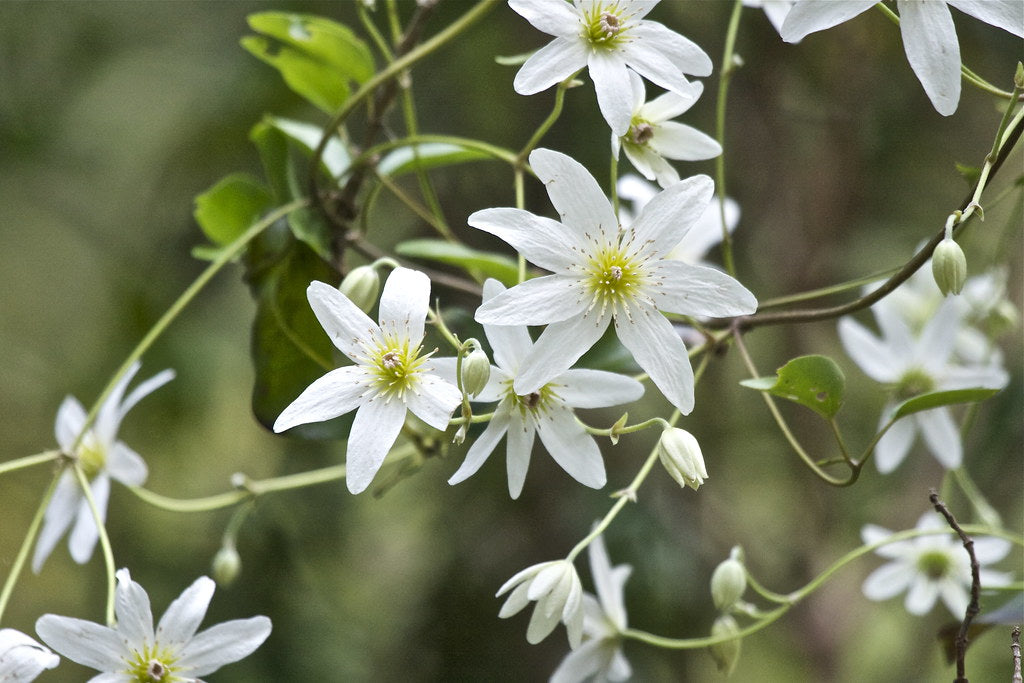
Clematis paniculata
Bloom Time: Late Summer to Mid-Fall
Pruning: Type III
This clematis is a large deciduous climber that has masses of small creamy flowers, up to an inch across, with a lovely fragrance that fills the air. When the petals fall away, the silvery seed heads add interest to the garden into the winter. This variety is perfect for covering a fence or arbor.
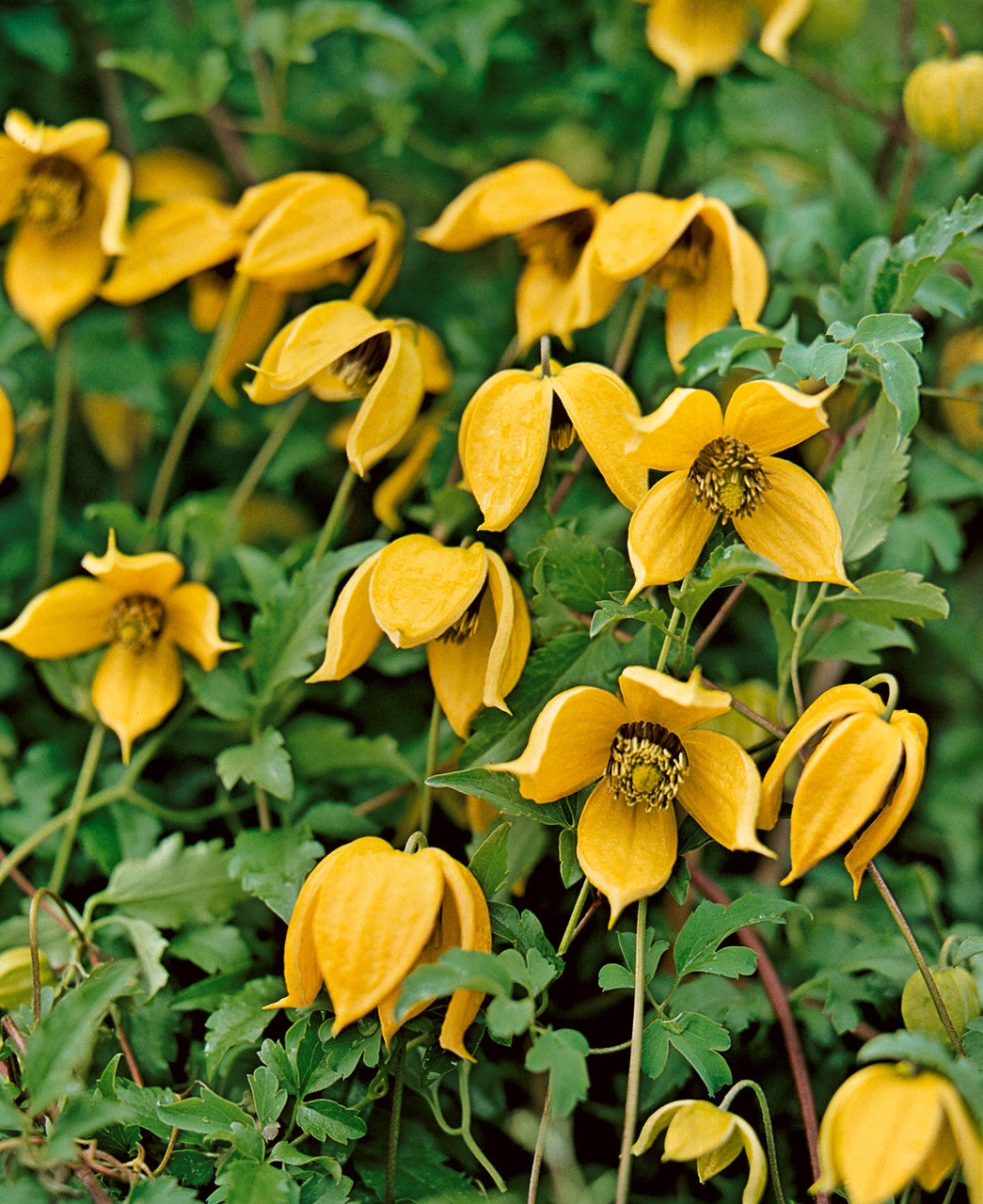
Clematis tangutica
Bloom Time: Summer to Fall
Pruning: Type III
Also known as golden clematis, this species originates from Central Asia and is known for its sunshine colored blooms. It can take on the form of a sprawling shrub with its long vines. The flowers give way to fluffy silver seed heads providing interest in the garden into fall. This variety is a wonderful presence for any location in your garden.